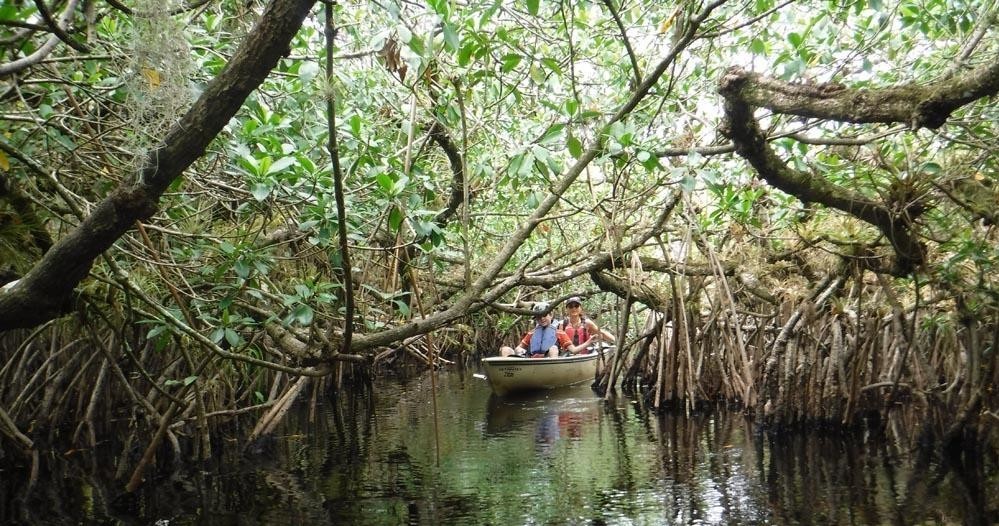Witness the Everglades’ vibrant wildlife in their natural habitat by mastering the park’s regulations and practicing environmental etiquette. This guide combines practical advice with immersive details to help you navigate quiet encounters and plan a responsible, rewarding Everglades adventure.
Stay on Designated Trails
Avoid damaging fragile marsh vegetation and disturbing wildlife by following marked paths and boardwalks at all times.
Use Quiet Gear
Opt for silent footwear and avoid noisy accessories to keep wildlife stress-free and increase your chances of sightings.
Carry Ample Water
The subtropical climate demands regular hydration—carry at least 2 liters per person for half-day hikes or paddles.
Check Regulations Before Arrival
Permits, area closures, and access rules can change seasonally; review official Everglades National Park resources before your trip.
Mastering Regulations and Etiquette for Silent Wildlife Encounters in the Everglades

Private Everglades National Park Guided Kayak Eco Tour
Starting at $149.95 • 3 Hours • All Ages
Discover the wetlands of the Everglades on a private guided kayak eco tour with Aquaterra Excursions. Paddle through mangroves, spot alligators, and photograph vibrant wildlife in a peaceful, tailored experience. Perfect for nature lovers and adventure seekers alike, this tour offers a true taste of this unique Florida wilderness.
The Everglades demands respect. This sprawling wetland ecosystem is fiercely itself—teeming with alligators basking under the sun, shy marsh birds slipping through sawgrass, and the relentless hum of life that never seems to pause. To truly experience quiet wildlife encounters here, you must first navigate the park’s regulations and embrace principles of environmental etiquette.
Start by understanding where you can go. The Everglades is divided into zones with specific rules governing each. Some trails and waterways require permits or have restricted access to protect fragile habitats. Check Everglades National Park’s official site for the latest updates before you hit the trail or water.
When hiking, sticking to marked paths isn’t just about your safety—it prevents trampling sensitive vegetation and disturbing hidden wildlife nests. Trails range from flat, sandy footpaths like Anhinga Trail (1.2 miles round trip, nearly zero elevation gain) that thread through sawgrass marshes, to marsh boardwalks that elevate you above water channels daring you to look closer without disturbing their banks.
Move deliberately and minimize noise; even soft footsteps echo in this quiet wilderness. Wildlife here is alert and quick to vanish if approached carelessly. Carry binoculars or a camera with a zoom lens to observe from a respectful distance. Never feed or touch animals; unnatural interactions can disrupt their behavior and endanger both you and the creature.
Timing your visit is crucial. Early mornings or late afternoons offer the best light and more active animals, but the Everglades sun can be brutal by midday. Hydrate frequently, wear lightweight, breathable clothing, and choose sturdy waterproof shoes or hiking sandals with grip—terrain often varies from dry trails to muddy flats and shallow creeks.
If you paddle, maintain low speeds and quiet paddling strokes. Kayaks and canoes push you through waterways that shimmer with reflections of mangrove roots clawing at the water’s edge. Here, the currents dare you to focus; they reveal glimpses of turtles sunning or fish darting beneath.
Respect the delicate balance—avoid launching from unauthorized sites, pack out every scrap of trash, and do not collect plants or shells. The Everglades is a living classroom that thrives only if left intact.
Prepare for the challenge: environmental awareness, patience, and a willingness to blend with your surroundings turn a visit from mere sightseeing into a genuine wildlife encounter. This is an adventure with nature as your guide and guardian, asking not to be conquered but understood quietly and fully.
Nearby Trips
All Adventures
Boat Charters
Water Activities
Adventures near Homestead
Discover the unique and memorable adventures that make Homestead special.
Frequently Asked Questions
Are permits required for hiking or canoeing in the Everglades?
Yes, certain areas and backcountry sections require permits, especially for overnight camping or paddling in sensitive zones. Check the Everglades National Park website for the most current permit information.
How close can I get to wildlife without disturbing them?
Maintain a distance of at least 50 feet from most wildlife. Use zoom lenses or binoculars for closer viewing and never attempt to touch or feed animals.
What is the best time of day for quiet wildlife observations?
Early mornings and late afternoons are when animals are most active and human traffic is lower, providing better opportunities for tranquil encounters.
Are there guided tours to help with navigation and etiquette?
Yes, several authorized guides offer tours emphasizing environmental ethics and local knowledge; these can enhance your experience and ensure compliance with park rules.
How should I dispose of waste during hikes or paddling trips?
Follow 'Pack It In, Pack It Out' principles rigorously. Carry all trash out with you as there are limited facilities, and improper disposal can damage this delicate ecosystem.
Is it safe to hike alone in the Everglades?
While possible, hiking alone requires advanced preparation, including navigation skills and awareness of weather, insects, and wildlife. For most, traveling in pairs or groups is safer.
Recommended Gear
Lightweight Waterproof Hiking Shoes
Protect feet from wet terrain and provide traction on muddy or slippery surfaces.
Wide-Brimmed Hat
Shield yourself from intense sun exposure during hikes or paddling sessions.
Binoculars
Allows for quiet, distant wildlife observation without disturbing animal behavior.
Insect Repellent
Essential for protection against mosquitoes and biting insects common in this subtropical region.
Local Insights
Hidden Gems
- "Pa-hay-okee Overlook offers expansive grassland views often missed by casual visitors."
- "Shark Valley Tram Road delivers a unique way to glimpse wildlife without disturbing habitats."
Wildlife
- "Watch for elusive Florida panthers in protected zones, rare but present."
- "Black-necked stilts and limpkin wading birds often glide silently through marsh edges."
History
"The Everglades was designated a National Park in 1947, protecting indigenous Miccosukee and Seminole territories and their cultural legacy intertwined with the swamp’s environment."
